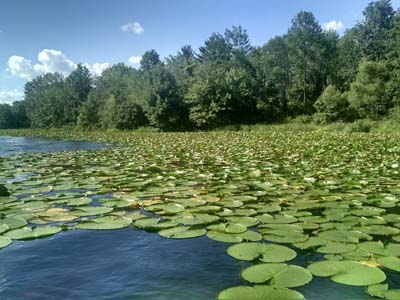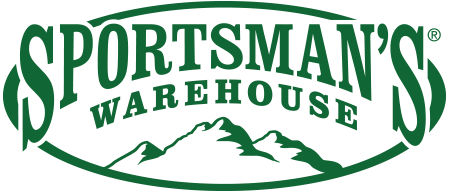 Catching fish is not nearly as hard as finding them in the first place. After all, it doesn’t matter how good your go-to, top-secret, uber-lucky lure is. If you don’t put it in front of fish, they won’t bite it. Seasoned anglers know that the way to locate fish - any kind of fish - is to first study the “structure” - the bottom contour and composition - and then locate the best “cover” on the best structure. In last month’s Fishful Thinker column, I detailed structure concepts, so now it’s time to talk about cover.
Catching fish is not nearly as hard as finding them in the first place. After all, it doesn’t matter how good your go-to, top-secret, uber-lucky lure is. If you don’t put it in front of fish, they won’t bite it. Seasoned anglers know that the way to locate fish - any kind of fish - is to first study the “structure” - the bottom contour and composition - and then locate the best “cover” on the best structure. In last month’s Fishful Thinker column, I detailed structure concepts, so now it’s time to talk about cover.If structure is the shape of the bottom, including but not limited to channels, drop offs, humps, flats and general shoreline shape, what exactly is cover? Cover is anything that sticks up from the bottom and/or out from the bank. It could be submerged, emergent or overhanging. Besides its relation to the water surface, cover could be comprised of rocks, weeds, bushes, wood or just about anything else that gives texture to the structure. In cases of an extreme lack of cover, fish may utilize shade lines or bottom content transitions the same way.
Before I go farther into this, let’s talk fish. Bass and walleyes are probably most known for their love of cover, but all species gravitate to it in some way. It may be only to access a food source that hangs around cover, like bluegills being preyed on by wipers that otherwise roam or trout feeding on bugs located in flooded willows. Some species will spawn around cover, others may move to open water to spawn and return to cover to rest up afterwards. Regardless, understanding the combination of structure and cover is key to consistent fishing.
An important thing to keep in mind is that cover is only as good as the structure it’s on. You can have the best-looking bushes in the whole lake, but mature bass won’t use them if they aren’t located on suitable structure. Conversely, even marginal cover will hold some fish if it’s on great structure. In this way, structure trumps cover. In an ideal world, I’d locate a great structural element – ie. a killer channel swing or isolated hump - with great cover on it. You may have heard of the “spot on spot” concept? Well, the first spot is the structural element and the second spot is the cover on it. You can fish the whole piece of structure and perhaps catch a few fish, but hit the cover located on it and you’ve found the sweet spot and most likely the biggest fish on the structure.
As I already said, cover can be many things, man-made or natural. Aquatic vegetation is a major one, as is flooded terrestrial plant life or timber. Trees and bushes on the shoreline that hang out over the water are prime and dead trees that fall in can be as well. Cover could be broken rock/rubble/rip-rap or it could be docks, moored boats or even something as small as cables securing said docks. In some cases, cover is random or isolated while in other cases cover is almost too thick to be fishable.
 In the absence of defined structure, dissecting cover becomes even more important. My home state of Florida comes to mind, but any very flat, featureless water is the same. Prairie “potholes”, reclaimed gravel quarries, very old lakes that have silted in and even river “frog water” (wide, flat, slow and even flowing sections of river) all deserve the same treatment. In these cases, I look for either a mix of two types of cover coming together, gaps or edges in the cover or isolated cover. Sitting in a boat looking out over 50 acres of lily pads may seem daunting, so look for other vegetation mixed in with the pads, holes or clumps in the pads or any type of log, edge or something else different mixed in. You’d never have time to fish the entire 50 acres thoroughly, so concentrate on the highest percentage areas.
In the absence of defined structure, dissecting cover becomes even more important. My home state of Florida comes to mind, but any very flat, featureless water is the same. Prairie “potholes”, reclaimed gravel quarries, very old lakes that have silted in and even river “frog water” (wide, flat, slow and even flowing sections of river) all deserve the same treatment. In these cases, I look for either a mix of two types of cover coming together, gaps or edges in the cover or isolated cover. Sitting in a boat looking out over 50 acres of lily pads may seem daunting, so look for other vegetation mixed in with the pads, holes or clumps in the pads or any type of log, edge or something else different mixed in. You’d never have time to fish the entire 50 acres thoroughly, so concentrate on the highest percentage areas.Expansive mud flats are common in western or old reservoirs; they also have almost no structure to them. But just the opposite as the pad field, they commonly have almost no cover. In this case, locating isolated individual pieces of cover - a single stump, rock, bush or even hard patch on the otherwise flat bottom - can pay off big time.
In general, I always look for a mix of cover types first. I especially like different mixes; weeds with scattered or isolated stumps or docks with brush piles around them, as opposed to two types of vegetation coming together, though that can be good too. All other things being equal, I look for something different. Facing a half mile long rip-rap dam (the dam is the structure, the rip-rap is the cover on it), I will fish anything that floated up to the dam, literally anything, including tires, logs, trash or whatever. Think spot on spot again.
Studying what cover types are available on good structure is the fastest way to break down new water or pattern familiar water. Fish edges, mixes, isolated pieces and most importantly pay attention to not only what kind of cover worked, but the relationship of the fish’s position to it. In no time at all, finding fish will become second nature and catching them gets easier!

